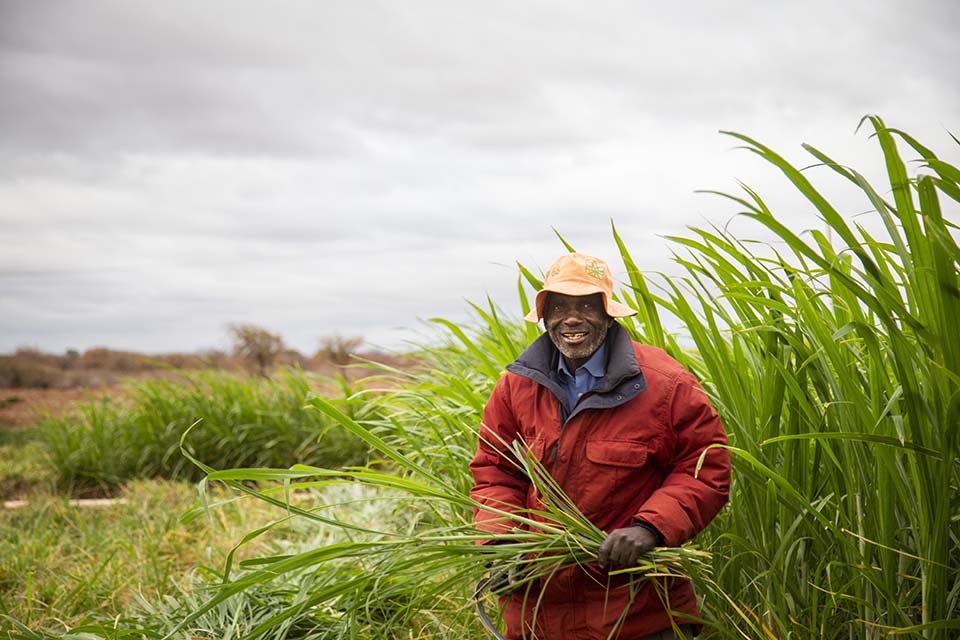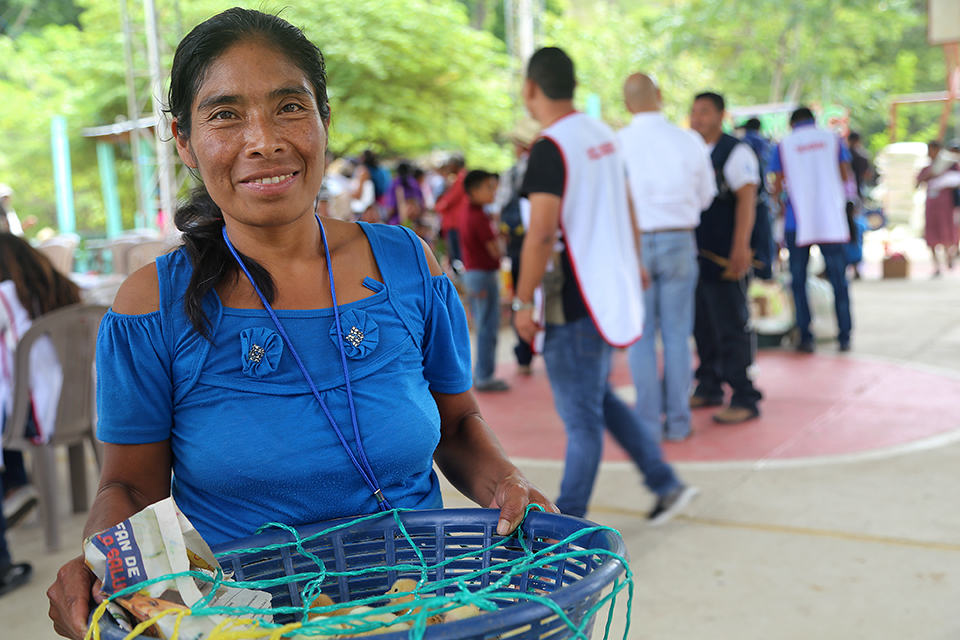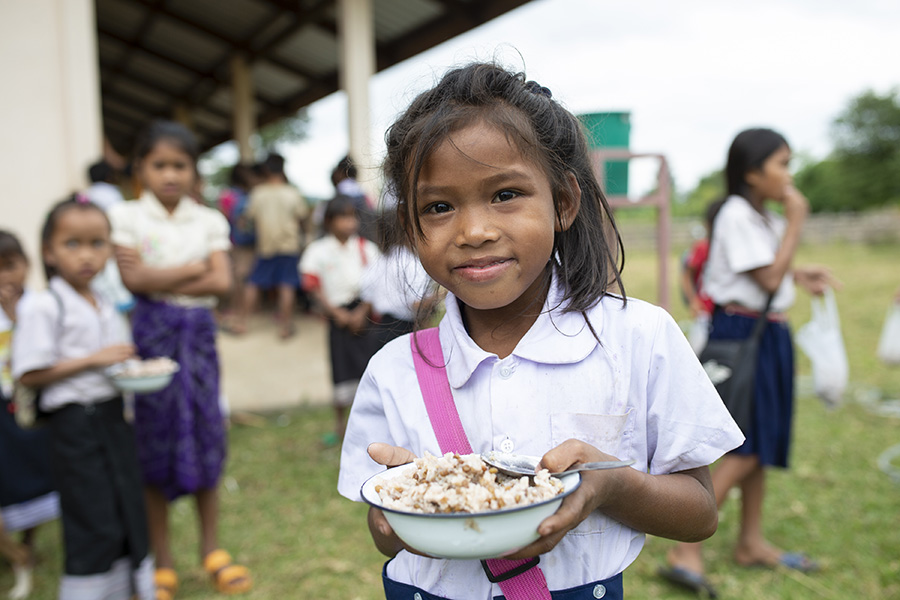The Continuing Problem of Hunger is Mainly Due toa¦
Six World Hunger Facts
- Between 720 and 811 million people faced hunger in 2020 - that's more than double the population of the United States.
- One in three people suffer from some level of malnutrition.
- Somalia is the world's hungriest country (Global Hunger Index).
- 149 million children were stunted in 2020.
- After a decade of decline, world hunger has been increasing since 2015. The world has not had this many hungry people since 2010 (FAO).
- Global food prices reached an all-time high in February 2022 (FAO) and will continue to rise as the war in Ukraine - one of the world's largest suppliers of wheat, maize, barley, and sunflower oil - rages on.
CRS Response
World hunger is a complex problem that cannot be easily solved. It's connected to many other complex problems like poverty, inequality, conflict, and climate change. There is no one solution that will work for every community around the world. Ending world hunger is not just about providing more food to people, so CRS takes a comprehensive approach through other programs in sectors like agriculture, microfinance, and education. In the U.S., CRS launched Lead the Way, a multi-year campaign to raise funds and advocate to end world hunger. Together, we can lead the way on ending this crisis through prayer, education, and action.
Global Snapshot
Hunger in East Africa
East Africa - a region of the continent that includes Ethiopia, Sudan, South Sudan, Somalia, Kenya, Eritrea, and Djibouti - is in the midst of an intense hunger crisis. The combination of ongoing conflict, political instability, drought, flooding, COVID-19, and inflation have left more than 50 million people in the region in need of emergency food aid. The climate shocks alone have caused large-scale displacement and major crop and livestock losses.
On top of localized problems contributing to the hunger crisis, the region relies heavily on Ukraine and Russia for food staples such as wheat and maize and cooking supplies like sunflower oil and fuel. As the war in Ukraine intensified in late February, the cost of these products skyrocketed, meaning families can now only afford a fraction of what they could once purchase. With the war showing no signs of slowing down, supply shortages are expected to continue for at least the next six months, potentially pushing the region even further into a state of severe food insecurity.
CRS has an enormous presence in East Africa, including large multi-sectoral programs in Kenya and Ethiopia. CRS' food security work in the region includes the rehabilitation of government water infrastructure; cash assistance to vulnerable families; farmer training and support; the provision of nutrient-rich agricultural seed to farmers; and support for livestock - including providing vaccinations, deworming, and training in rangeland and pasture production.
Southern Africa
With Southern Africa's temperatures rising at twice the global average, countries like Zimbabwe, Madagascar, and Zambia are bound to continue to feel the impacts of climate change, despite contributing little to the crisis. According to the World Food Program, nearly 45 million people in Southern Africa are "gravely food insecure following repeated drought, widespread flooding, and economic disarray."
Hunger in Zimbabwe
Zimbabwe is slowly recovering after experiencing its worst drought in over 30 years. The 2020/2021 farming season yielded the country's highest production in 20 years, resulting in a decline in the number of food-insecure people (World Food Program). However, as climate change continues to impact the population - 80% of whom work in the informal sector and live paycheck to paycheck - the need for food aid will continue. If another drought hits, families will again be forced to drain their savings and sell off household items to buy food.
In order to help families and farmers prepare for potential droughts and adjust to the changing climate, CRS trains farmers to use climate-smart techniques, like improved soil and water conservation. CRS also provides farmers with drought-resistant crops and livestock, like goats. These crops and livestock not only allow farmers to have food for themselves and their families but also a source of income in the future. In addition to this, CRS works with the government to send timely text messages to farmers to warn them about risks to their crops. These text messages allow farmers to stay one step ahead and save their crops.

Madagascar Drought
Renowned for its biodiversity, and generous and resilient people, Madagascar is nonetheless one of the poorest countries in the world. Nearly 70% of people there live on less than $1.90 per day - that's less than the cost of a gallon of milk or loaf of bread. The country also has the world's tenth-highest rate of malnutrition among children under 5 (World Food Program). CRS works on organizing seed fairs, where farmers can choose from a variety of drought-resistant seeds to avoid crop failure. With these drought-resistant crops, farmers across Madagascar are able to feed their families and provide food options for members of their community.
Zambia Drought
Despite more than a decade of consistent economic growth, people across Zambia are struggling with chronic poverty, inequality, and food insecurity. Combine that with devastating natural disasters including floods and severe droughts, and the country has been unable to reach its full potential. More than 80% of the rural population lives below the poverty line - meaning they often struggle to maintain a basic standard of living, feed their families, send their children to school, or afford clean water - and nearly half of Zambian children under 5 are stunted due to malnutrition. During the "hungry season," when food is scarce, many families only eat one meal a day. CRS currently works across Zambia to provide relief to these families through food aid, nutrition education, and climate adaptation farming techniques. Together with the local church, other faith-based organizations, and in collaboration with the government of Zambia, CRS works across multiple fields to help alleviate poverty and stop hunger.
Drought in Guatemala
For the past several years, Central America has been experiencing a drought that has destroyed crops and made it harder for families there to feed themselves and earn a living. In Guatemala, where almost half the population can't afford to put food on the table, CRS is providing ways to change that through Superamos, a U.S. government (USAID)-funded project that provides cash and food vouchers, and organizes agricultural fairs. With the cash and food vouchers, people are able to buy what they need while supporting local businesses and helping their local economy. The fairs that Superamos organizes help people like Maria Ramírez buy seeds, farming tools, fertilizer, and other items like baby chickens. These chicks not only provide eggs to eat, but also a source of income once they are old enough to be sold.

When they attend the Superamos fairs, members of the community can also attend demonstration sessions, where they learn to recognize the symptoms of acute malnutrition, how to select food, and prepare nutritious meals. CRS is also working across Guatemala to teach climate-smart farming techniques. By learning how to use their natural resources in the best way possible, farmers are ensuring their cropland will remain healthier for longer. This means more and better crops for their families and community.
Laos
Lao People's Democratic Republic (Lao PDR) is a small, landlocked country in Southeast Asia with a population of over seven million people. Most of the Lao people live in rural, remote communities and face challenges when it comes to accessing essential services, like education and healthcare. As a result, 33% of children under the age of 5 in Lao PDR are stunted, and families there struggle to feed their growing children (World Food Program). Since 2007, CRS has been working in Lao PDR in partnership with the local government to help address inequality, and alleviate poverty, and hunger. Through McGovern-Dole Food for Education, a USDA-funded project, CRS has provided nutritious school meals to 40,000 students daily since 2016. CRS also teaches local cooks, storekeepers, and community leaders hygienic ways to store and prepare food.

fergusonviser2000.blogspot.com
Source: https://www.crs.org/media-center/current-issues/hunger-crisis-facts-and-how-help
0 Response to "The Continuing Problem of Hunger is Mainly Due toa¦"
Post a Comment